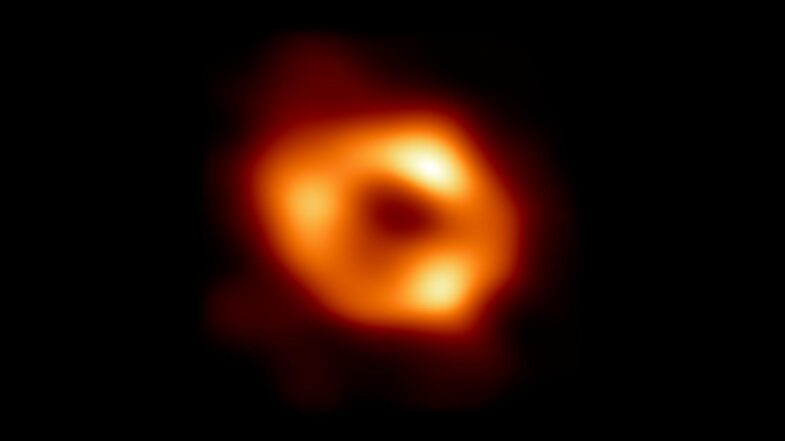
First image of Milky Way black hole obtained by Haystack and the EHT
Media contacts and interview requests: Nancy Kotary, nwk@mit.edu, 617-715-3490
Building on the 2019 success of the first image of a black hole, M87*, EHT researchers from across the globe this morning announced the imaging of Sagittarius A*, or Sgr A* (pronounced “sadge-ay-star”) at the National Science Foundation in Washington, DC, and several other simultaneous press conferences worldwide. Sgr A* is a black hole at the center of our galaxy.
The results are published in Astrophysical Journal Letters in six papers, available at:
https://iopscience.iop.org/journal/2041-8205/page/Focus_on_First_Sgr_A_Results
For more on the Haystack contributions, please see the full MIT News story and the main press release. More on the Event Horizon Telescope collaboration is available on its website and the National Science Foundation.
The image was obtained by the EHT collaboration, a global team of hundreds of scientists and engineers from more than a hundred institutions, all working together to gather data and refine this first image of Sgr A*. This is the first visual confirmation that the massive dark object known to be at the center of the Milky Way is indeed a black hole.
This image represents an extraordinary effort from a worldwide team to overcome the challenges posed by an object that changes its structure while the data are being gathered, and which is blurred by material in the plane of our galaxy through which we view it. It is notoriously difficult to reconstruct images from a widely dispersed array like the EHT, and both rigor and ingenuity have been required to properly understand and quantify uncertainties. The result is a milestone in our understanding of black holes in general and the one at the center of our galaxy in particular. The techniques developed for Sgr A* pave the way for spectacular EHT images and science to come, as the telescope array is expanded and refined.
Colin J. Lonsdale, Director, MIT Haystack Observatory and Event Horizon Telescope board chair